Art World
Artist Witt Fetter Connects With Cerulean and the Spirit of Paul Thek on an Italian Isle
In her new solo show, the Brooklyn-based painter translates pop culture and modern life in her charming work. For this "Source Material," she recounts her inspiring journey to the island of Ponza.
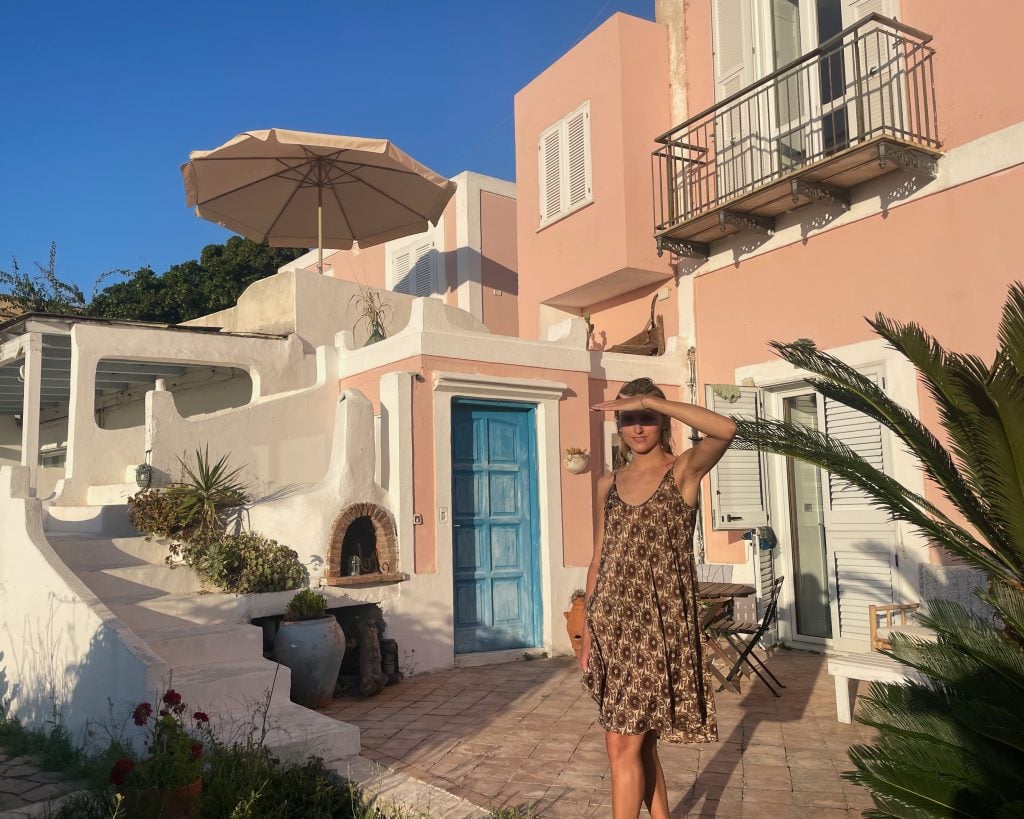
Witt Fetter is an artist who reflects upon pop culture and modern life in her cotton-candy, pastel colored oil paintings, sometimes sugarcoating some harsher aspects of the day-today grind. Her works can be playful and feminine, light-hearted and funny, but they do pack bite and emotional resonance. This unicorn has a horn and it’s sharp, but also subtle. The New York-based artist opened a new show this week at Derosia Gallery in Lower Manhattan.
“The Unlikely Event of a Water Landing” runs until December 14 and encapsulates riffs on fame, tragedy, and disaster, and her work often contains reflections on her home state of California. There is No Threat depicts an ominous “false missile” alert roadside sign peering out through smog and semi-obscured palm trees. Elsewhere, the Titanic is rendered as an inflatable bouncy slide, and the pièce de résistance, Bimbo Summit reduces the iconic photo of Paris Hilton, Britney Spears, and Lindsay Lohan in the front seat of a sedan as a kitschy photorealistic car sun shade.
The artist shared her inspiring European jaunt that is sure to shape her work in the future.
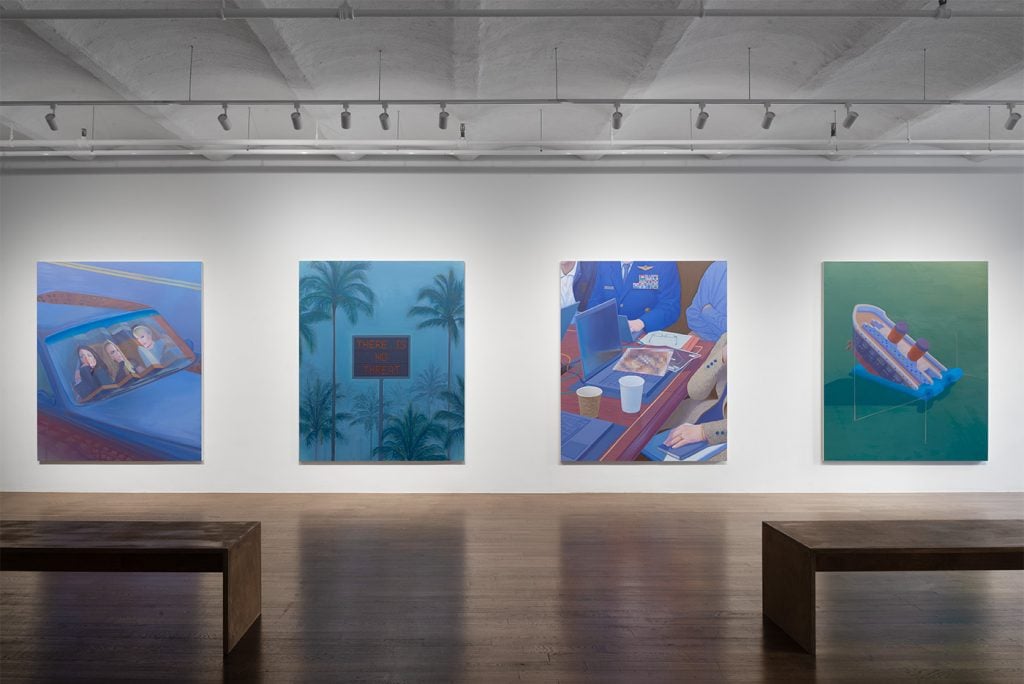
An installation view of “The Unlikely Event of a Water Landing.” Courtesy of Derosia Gallery.
In July, mid-way through preparations for my solo show opening at Derosia in New York City this fall, I took a break from my studio in Brooklyn to travel to Italy and Switzerland. With my sketchbook and paints in hand, I intended to shift my focus away from the conceptually dense subject matter of the paintings in my upcoming show to a more immediate and simplified attention to the landscape around me–a back-to-basics exercise in understanding light, color and form.I hoped this trip would jump-start a sense of creative clarity and inner focus that I had found hard to activate in the months leading up to my trip. I set my sights on Italy, the place I most associate with the shades of blue, Sienna, and ochre that dominate my painting practice, because it is a place where spirituality has been central to the practice of art–as both a subject in the vast fresco paintings from the Renaissance and as a personal project of inner cultivation for more recent artists.
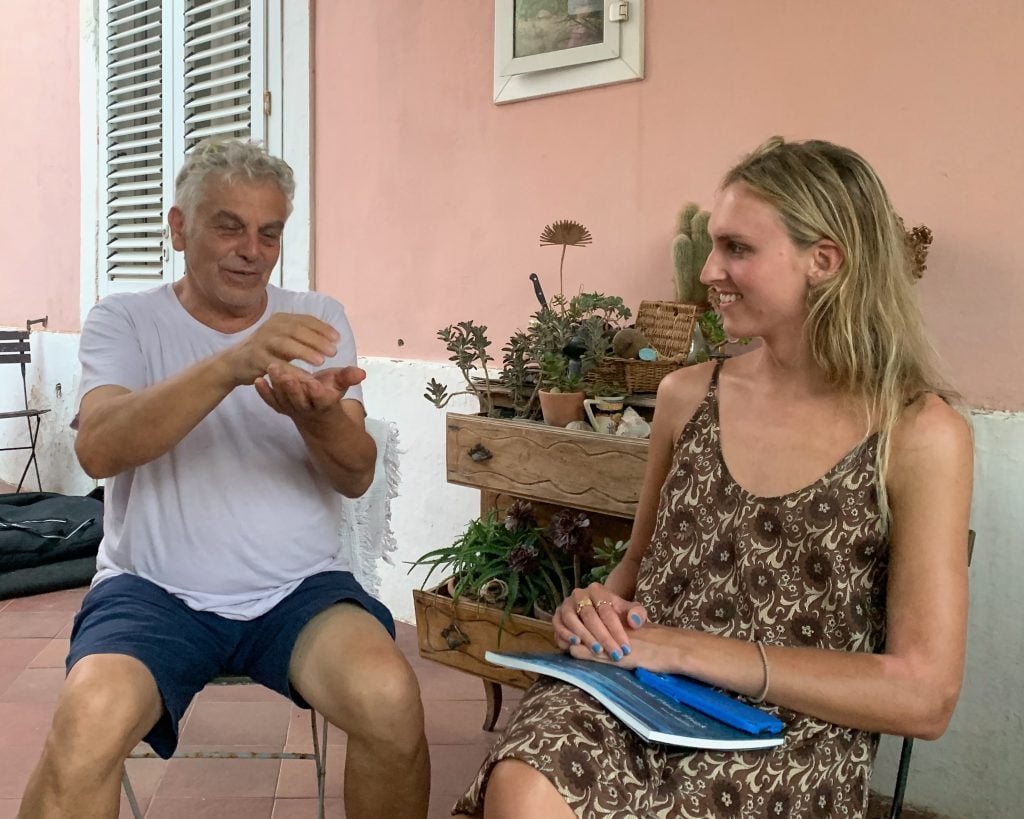
Enzo di Giovanni, who knew Paul Thek as a boy, and Fetter. Photo: Aidan Elon Huntington.
My self-appointed patron saint for this trip was Paul Thek, an artist whose work and ethos I had developed a deep interest in over the past couple of years. With fellow artist Aidan Elon Huntington, we set off for the island of Ponza, a refuge for Thek in the 1960s and 1970s. I wanted to immerse myself in the shades of vibrant cobalt and cerulean of the gouache paintings he made while on the island and also to experience what traces remained, if anything, of Thek himself. In Ponza, we stayed in Casa Carmela, the house where he rented a room for the first few years he began visiting the island (by chance, we ended up in the same room where he had stayed). The house is still owned by the same family, and we were lucky enough to spend time with Enzo di Giovanni, who was a small child when Thek lived there with his family. Thek left a lasting impression on the young Enzo, who excitedly recalled his memories of the artist–most vividly the time they decorated a pear tree with ornaments made out of scraps of metal and plastic (Thek later recounted this experience in a letter sent to a friend back in New York, including a Polaroid of the pear tree).
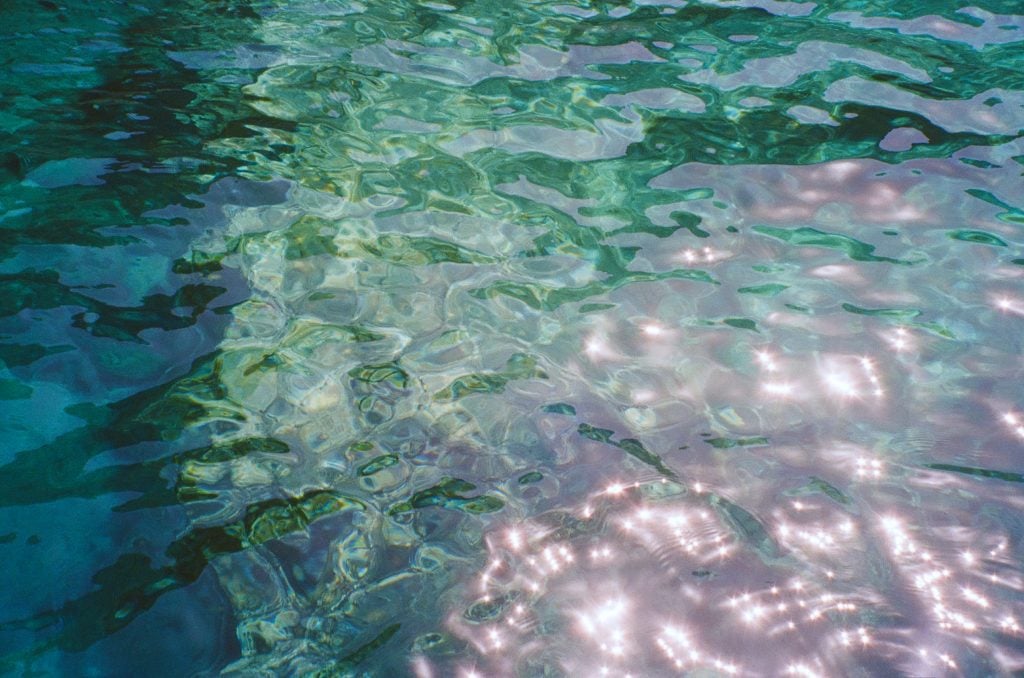
The crystalline sea. Courtesy of Witt Fetter.
We spent our days in Ponza out on the water, drawing and swimming, and our evenings back in the port. It was in brief moments out in the crystalline sea, surrounded only by pillars and cliffs of eroded rock, and our time listening to Enzo’s stories, that we felt most in touch with a feeling of historical continuity between our time and Thek’s. Otherwise, we were swept up in the frenetic and overwhelming experience of the present. It was difficult to always see beyond the density of our experience as two American trans girls in modern day Italy to the world Thek inhabited. Although there is no material trace of the pear tree in the corner of the tiled patio, di Giovanni’s love for Thek, the warmth of the local residents who welcomed us, and the eternal presence of the landscape, were gentle reminders of the forces that persist across time.
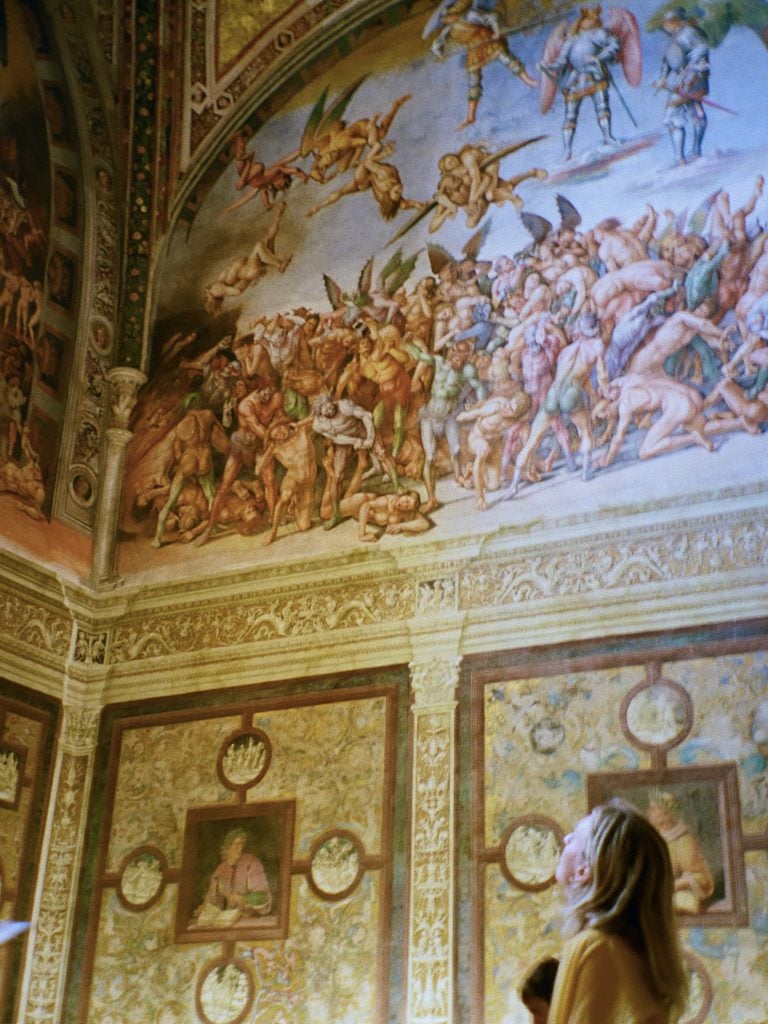
The artist and a heavenly ceiling. Photo: Aidan Elon Huntington.
From Ponza, we traveled to the mainland to attempt communion with a different type of spiritual surround– the fresco cycles of Luca Signorelli’s paintings in the San Brizio chapel in Orvieto and Giotto’s Arena chapel in Padua. Arriving at the Orvieto Cathedral where the scent of frankincense and myrrh still hung in the air from that morning’s Sunday mass, we wandered into the San Brizio chapel to see Signorelli’s captivating frescoes depicting The Last Judgment. To be enveloped in an artist’s singular style was thrilling—to witness his distinct colors, quality of marksmanship and overriding affective tone confidently executed across the walls and ceilings of this small chapel. Having never seen his work before, in person or in reproduction, I craned my neck back, awestruck, at the explosion of movement and color on the surrounding surfaces.

The artist’s rendition of her trip. Courtesy of Witt Fetter.
We traveled to Padua to see the vibrant blues and reductive compositions of Giotto’s frescoes. In the end, the apparatus that surrounds a work of prized historical importance such as Giotto’s– decontamination rooms, finite amounts of time in the gallery itself, and years of seeing his paintings reproduced in art history lectures and textbooks, made the experience less than penetrating. Unable to settle into what was only a few minutes to take in a whole fleet of paintings, I tried, at the very least, to let the deep, sharp blues in their brilliant patina wash over me.
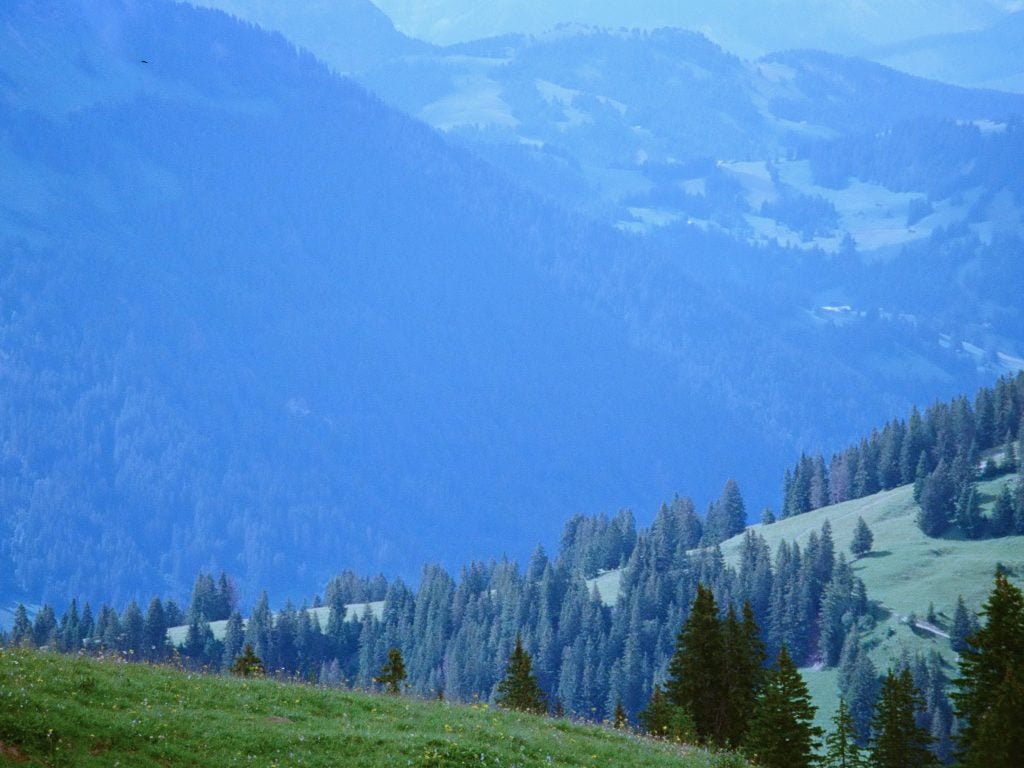
Well, that is a rapturous vista. Courtesy of Witt Fetter.
The color blue was the impetus for this trip, and has motivated much of my artistic journey. It was Thek’s cerulean brushstrokes that had first caught my eye and provoked the beginning of a deep love for his work. The last stretch of the trip took us up through the Italian Alps into Switzerland, where I was struck by the amount of blue in such a verdant, green, landscape. Having cut through the orange-tinted haze of the gauzy Mediterranean air into the crisp air of the mountains, I found myself encountering a deep ultramarine in the shadows of pine trees that I hadn’t expected to see after departing the sea. What I also discovered was a sense of focus and centeredness. In Ponza, we peered into an environment that had been another person’s cathedral—a place for Thek that offered otherworldly belonging and fulfillment. As we moved north through Italy, our stops in Orvieto and Padua brought us to places in which artist’s had conjured remarkable spiritual worlds. But It was only in the mountains where I began to feel a space of my own for my mind and body. Returning to New York to finish the paintings for my show, the blues in my paintings have shifted towards green in an attempt to conjure the color of a mountain’s shadow and keep alive the feeling of an emboldened self.





